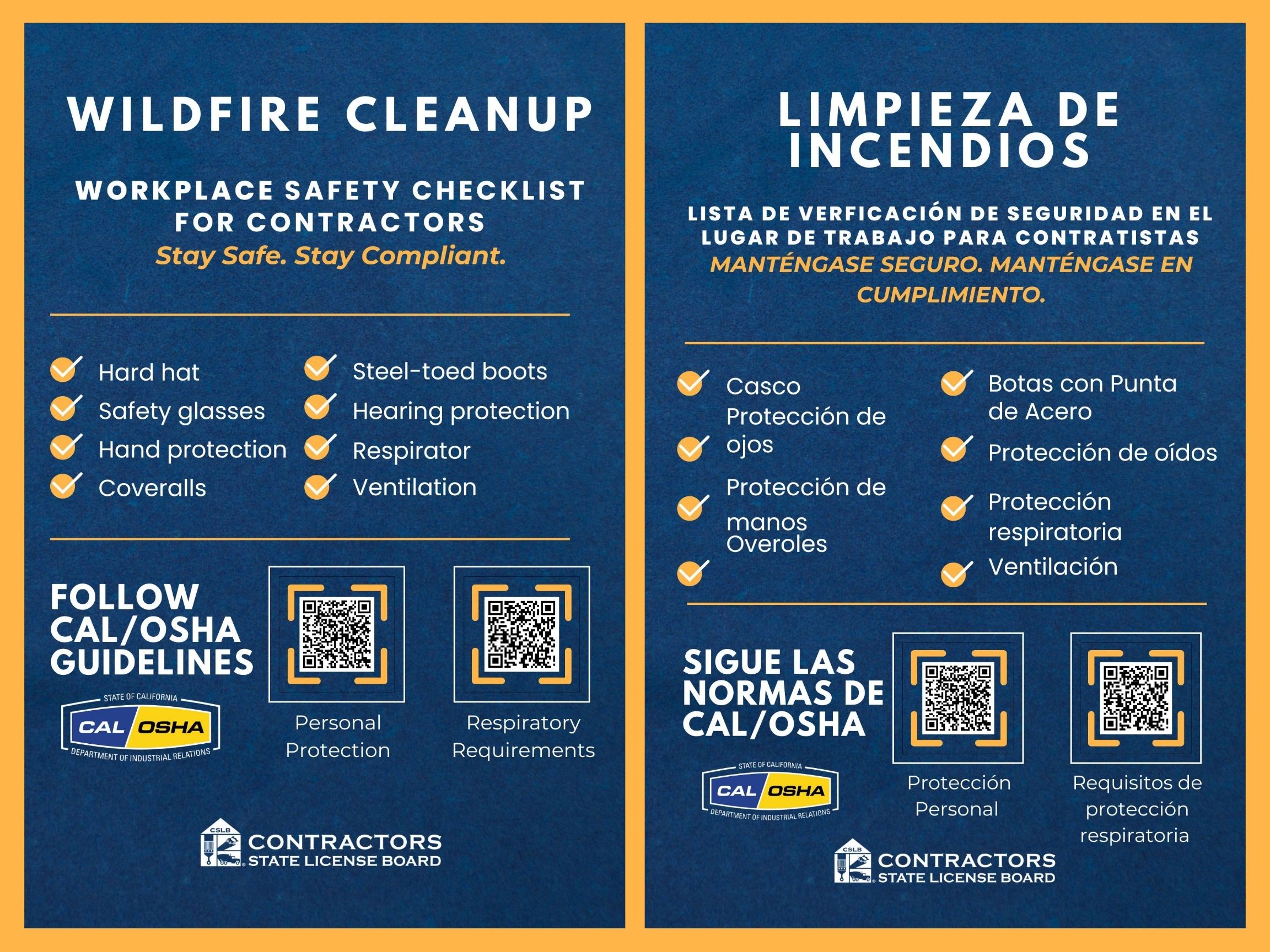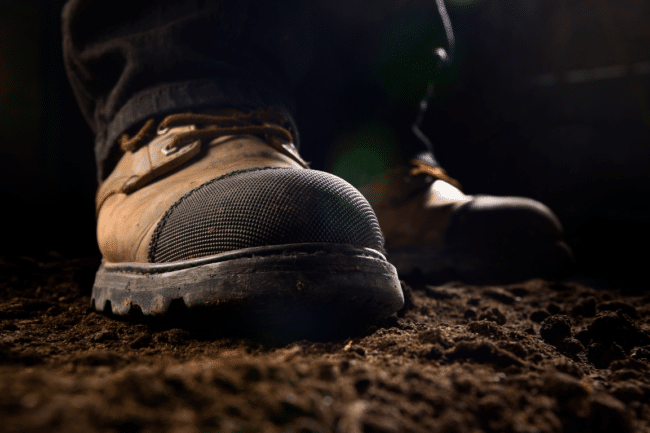After the devastating wildfires early this year, many are participating in the wildfire cleanup. Wildfires leave behind significant devastation, creating hazardous conditions for those involved in cleanup and recovery. Workers and volunteers who assist in the aftermath face many dangers, including exposure to toxic debris, unstable structures, and poor air quality. Ensuring their safety and well-being is essential. Below we will review the best practices for protecting workers during wildfire cleanup.
1. Understand the Hazards of a Wildfire Cleanup
Cleanup workers are exposed to various risks, including:
- Airborne Hazards: Smoke, ash, and particulates can cause respiratory issues.
- Toxic Materials: Burned structures release hazardous chemicals such as asbestos, heavy metals, and volatile organic compounds (VOCs).
- Structural Instability: Fire-damaged buildings and trees can collapse without warning.
- Heat Stress and Dehydration: High temperatures and physically demanding tasks increase the risk of heat-related illnesses.
- Physical Injuries: Sharp debris, unstable ground, and falling objects pose risks of cuts, fractures, and other injuries.
When everyone involved in a wildfire cleanup understands the risks and hazards involved, steps can be taken to protect individual safety and avoid major damages.
2. Always Use Personal Protective Equipment (PPE)
Proper PPE is essential for minimizing exposure to wildfire-related hazards. Workers should always wear the following equipment:
- Respirators: N95 masks or higher-rated respirators that protect against harmful particulates.
- Protective Clothing: Long sleeves, gloves, and fire-resistant gear in order to prevent burns and cuts.
- Eye Protection: Safety goggles that shield eyes from dust and flying debris.
- Steel-Toed Boots: Sturdy footwear reduces the risk of punctures and foot injuries.
3. Protect Your Respiratory System
Protecting our lungs and airways is essential to overall health. Proper respiratory protection also permits these valued workers and volunteers to continue working safely. Following these steps ensures respiratory health:
- Check local air quality reports before starting work.
- Avoid strenuous activities in heavy smoke conditions.
- Use a respirator, especially when working in areas with ash and soot.
- Take frequent breaks in clean air environments to reduce exposure.
4. Be Heat Safety Conscious
Another important aspect of health protection is hydration and heat safety. These steps are especially important in warmer climates:
- Drink plenty of water throughout the day.
- Take regular breaks in shaded or cooled areas.
- Wear lightweight, moisture-wicking clothing.
- Be aware of heat exhaustion symptoms, such as dizziness, nausea, and excessive sweating. If you notice any of these symptoms, inform your supervisor immediately and take the needed rest.
5. Handle Hazardous Materials Properly
Wildfire cleanup involves large amounts of hazardous materials. Taking proper care when handling any of these is essential for health and safety. Follow these steps for maximum protection:
- Assume all ash and debris contain toxic substances.
- Wet down debris before handling in order to minimize airborne dust.
- Avoid disturbing fire-damaged insulation, which may contain asbestos.
- Dispose of hazardous waste according to local environmental regulations.
6. Prevent Injuries and Accidents
Accidents and injuries are common on wildfire cleanup sites. In order to reduce the possibility of an accident:
- Survey work areas for unstable structures before entering.
- Use proper lifting techniques to prevent strain and injuries.
- Work in teams whenever possible to ensure assistance in case of emergencies.
- Follow all safety protocols and emergency procedures.
7. Care For Mental Health and Emotional Well-Being
Wildfire cleanup can be emotionally taxing, especially for those affected by the disaster. To support mental health:
- Encourage open discussions about stress and trauma.
- Take breaks when feeling overwhelmed.
- Provide access to counseling and mental health resources.
8. Provide Training
Training can make all the difference in protecting your health and safety as you work to cleanup after a wildfire. These sessions are indispensable and should be carried out by all organizations involved in cleanup.
- Conduct safety training sessions before cleanup begins.
- Ensure workers know how to use PPE correctly.
- Establish emergency communication plans.
- Have first aid supplies readily available at all worksites.
Cleaning up after a wildfire is a challenging but necessary task. Prioritizing worker safety through proper training, protective equipment, and awareness of hazards ensures that those involved remain healthy and protected. By following these suggestions, workers can help in recovery efforts while reducing health risks and injuries.
The Department of Industrial Relations in the State of California published an article on Wildfire Cleanup.

At GreenFire our hearts go out to all those affected by the recent wildfires. We are also extremely grateful to all those participating in the cleanup and rebuilding of our communities. While GreenFire is not a cleanup professional, we are dedicated to helping our neighbors.
GreenFire provides a number of fire protection and extinguishing products that can give peace of mind and confidence in the face of possible future dangers. To prepare for possible future wildfires, home fires, or any other type of fire, consider using GreenFire Pro Defense to help protect your property. For more information about our variety of products, feel free to contact us.
Follow us on Facebook, Instagram, Pinterest, Youtube, and TikTok for updates.

